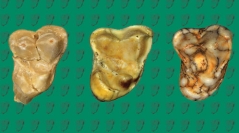

 Comptes Rendus Palevol
20 (17) - Pages 297-314
Comptes Rendus Palevol
20 (17) - Pages 297-314The site of Venta Micena (Orce, Spain), c. 1.6 Ma, preserves one the best paleontological records of the early Pleistocene large mammals fauna in Europe. Here we describe the specimens of the genus Canis Linnaeus, 1758 in the context of the late Villafranchian and Epivillafranchian fossil dogs from Eurasia. Anatomical and metric data suggest that the Venta Micena Canis form differs from the classical records of Canis etruscus Forsyth Major, 1877 and Canis arnensis Del Campana, 1913, and that it forms part of the younger Canis mosbachensis Soergel (1925) lineage, also recorded in two slightly younger sites of the Orce site complex, Barranco León and Fuente Nueva-3, dated to c. 1.4 Ma. The anatomy of the Venta Micena fossil material shows features that resemble the Canis forms from the Caucasian site of Dmanisi, dated to 1.8 Ma, and Canis ex gr. C. mosbachensis. Nevertheless, dental peculiarities support the creation of a new chrono-species, Canis orcensis n. sp., from the town of Orce. Morphological and paleoecological data suggest that this species probably consumed more vertebrate flesh than other similar sized early Pleistocene canids (i.e., a trend to hypercarnivory), which had more omnivorous dietary habits.
Canis orcensis n sp., carnivora, Canidae, late Villafranchian, Early Pleistocene, Quaternary, Europe, new species.